Crank-no-start with a hybrid is a little different, but they’re actually easier to diagnose than conventional cars.
When you grab your repair order and read, “Vehicle towed in. Engine cranks but won’t start,†you’re probably pretty happy. And why not? It’s likely to be a much easier diagnosis than an intermittent misfire, or a stall that occurs only after 20 minutes of driving. Sure, it may not be as easy as a check engine light with an AF sensor heater code, but you’re probably going to make short work of it.
But what if it’s a hybrid? A crank-no-start is a different beast with a hybrid. The write up may not even say the car cranks but won’t start, since the engine “cranks†at 1200 rpm and sounds like it’s running, even though it’s not. And then there’s the battery. The hybrid battery is cranking the engine, not the 12V. Too many cranking attempts and it may discharge, and your booster pack isn’t going to help you then.
There’s no need to worry about dealing with “cranky hybrids.†They are a little different, but they’re actually easier to diagnose than conventional cars. Hopefully, after reading this article and a little practice, you’ll smile the next time a dead hybrid lands in your box. Bring on the gravy!
What Does a Hybrid No-Start Look Like?
With a conventional gas car, the driver starts the car once at the beginning of the trip. The engine stays running until the driver is ready to make a stop. Hybrids are different. The engine is starting and stopping all the time. On a conventional car, the driver knows when the engine doesn’t start. He commanded the engine to start, but it didn’t. With a hybrid, he has no input when the engine stops or starts, so to him, it seems like the car just “lost power†or “stalled.â€
A common customer complaint goes something like this: “A bunch of warning lights came on and the engine lost power. I turned if off and then started it again. It drove for a while, then the same thing happened. I restarted it again, drove a short distance, and the same thing happened. Then I tried to start it again and it wouldn’t start.â€
What Actually Happened
Here’s what happened. The HV ECU tried to start the gas engine. It didn’t start. Warning lights came on, the customer drove on electric power for a bit. This was repeated until the HV ECU prevented the engine from cranking again to save the battery. This is a very good thing because it means there will be some battery life left, and you’ll be able to do some testing to find the cause of the no-start. The very first Prius allowed the customer to keep trying to start the car until the battery was completely dead.
All new hybrids prevent the customer, or tow driver, or car porter, from continually cranking the engine and running the HV battery down, unless the memory is cleared. Ideally, you’ll be the one to clear the P0A0F and allow another cranking attempt.
Make the Most of Your Opportunity!
You never know what you’ll have to work with. The HV battery may have enough juice to crank the engine 30 times, or there may only be one crank left. I once had an old Prius heading to the recycler, so I did a little testing. I kept Readying the car and letting the engine crank until it wouldn’t anymore. The SOC was 18% when cranking slowed and stopped mid attempt. But there are no hard and fast rules.
I once diagnosed a Prius using freeze frame data and then repaired it. The SOC was only 15%, but to my surprise, the engine cranked and started. Some Toyota service information says that one 7-8 second cranking attempt will discharge the battery by about 1%. Once again, there are no guarantees, so make the most of every attempt to start the engine and get as much information per attempt as possible.
Freeze Frame Data is Pure Gold
If you have freeze frame data, start there. It costs zero cranking attempts! Not only that, the data from Toyota hybrids (well post 2003 at least) is often enough get you 90% of the way to your diagnosis. Use freeze frame data before trying to start the engine.
Toyota Hybrids Crank in Closed Loop
What does an engine need to start? Compression, spark, air, fuel, and timing, right? What if you could eliminate any problems with air and fuel just by looking at freeze frame data? If you were to rank causes of crank-no-start by frequency, the order would likely be air/fuel, spark, timing, compression. Being able to check air/fuel in freeze frame is wonderful.
Toyota air/fuel sensors output a voltage of 3.3V when the air/fuel ratio is 14.7:1. The output range is around 0-5V. If the mixture is leaner, the voltage is higher than 3.3V. If the mixture is richer, the voltage is lower than 3.3V. If you have freeze frame data that shows the air/fuel sensor voltage at 4.99V, you know that the no-start was due to no fuel.
Mass Air Flow Sensor
There’s an old rule of thumb mechanics often use – the MAF reading in grams per second ought to be roughly equal to the engine displacement in liters. So, if you have a 1.8 liter engine, the MAF reading ought to be around 1.8 g/sec. The problem with the rule is that it assumes sea level and ~700 rpm. It doesn’t hold true for hybrids that crank at 1200 rpm.
How do you know what the MAF reading should be? Like so many things, you need to “know.†You can build your own database by checking the cars that come through your shop, or you can compare to a known-good, if you happen to have one in the shop.
A 1.5L Prius 1NZ-FXE will have a MAF reading between 5-8 g/seconds at 1200 rpm. If a 2009 Prius comes in and the freeze frame data shows a MAF reading of 2.6 g/sec and a AFS reading of 4.99V, there’s likely a problem with the MAF. By the way, the Prius 2000-2003 and 2004-2009 had the MAF below the air filter. Debris from the air filter can be easily dropped into the MAF when the air filter is checked or replaced. Toyota fixed this issue by moving the MAF above the air filter in subsequent models.
P3193
P3193 is a code designed to save you from wasting time. If the fuel level is low, and the AFS reading is lean, and the engine doesn’t start, a P3193 will set. The trouble code description “Fuel Run Out†can save a technician a whole lot of time. Who hasn’t found low fuel pressure after removing a cowl, checking fuel pump voltage, only then to finally notice that the fuel gauge is on “E�
Sometime the Answer Isn’t In The Freeze Frame
Not all no-starts are fuel related. Other types of crank-no-starts are far more likely to set a trouble code to point you in the right direction. Crank sensors can cause a no-start, but they usually set a P0335. Cam timing issues will usually set a P0016 (cam/crank correlation). However, if you find yourself with no other codes to help, be as efficient as possible in your diagnosis. Set up all the test you want to run and use only one crank to run them all. What might you check?
- Spark plug and coil visual inspection
- Compression gauge (or gauges)
- Spark tester (or testers)
- Cam/Crank waveforms
What if the HV Battery Goes Flat?
In the early days, towing the car to a dealership was the only option, and even the dealerships didn’t have a hybrid battery charger on-site. Now, the GRX-5100 rescue charger is a required tool at Toyota dealerships, and independent repair shops can also buy the rescue charger.
However, chances that you’ll ever need to recharge an HV battery are low, thanks to the software changes. Typically, batteries are discharged because an owner is a little too smart for his own good and figures out that he can drive a little further if he disconnects the battery to clear codes. There are also shops that don’t realize that the engine isn’t starting and that they’re draining the HV battery.
How Can You Tell if the Engine is Running or Cranking?
Determining whether an engine is running or cranking by ear is difficult. When cranking, there’s a little less “pop†in the exhaust note, and the engine is a little smoother. I think I can tell most of the time. That said, I wouldn’t bet much money on the accuracy of my guess.
The way you can know for sure is to check the live data in the HV ECU. The MG1 cranks the engine. MG1 is the smaller of the motor/generators (MGs). There is an easy to remember rule for Toyota MGs. If the torque and rpm values are both positive or both negative, the MG is acting as a motor. If the torque and rpm values are negative/positive or positive/negative, then the MG is a generator. If the MG1 is acting as a motor, the engine is cranking, not running.
Case Study – 2008 Prius Died While Driving
A 2008 Prius was towed to the shop with a P0A0F (HV ECU – engine didn’t start) and a P3193 (ECM – Fuel ran out). Normally, a P3193 is caused by a low fuel level. That’s what the customer and tow driver suspected since the fuel gauge was flashing on “E,†so they had added 2 gallons of fuel. The engine still didn’t start, and the car was towed in.
A quick check of the freeze frame data revealed that the no-start was likely caused by lack of fuel. The air/fuel sensor was pegged at 4.99V (full lean) and the MAF reading was higher than normal at 12.67 g/sec., which left the fuel pump, injectors, and an empty fuel tank as possibilities. At this point there’s no need to check for spark, compression, timing, etc.
Since the code set before the tow driver had added fuel, I figured that it was best to check live data before proceeding. After setting the Techstream to record ECM data, I tried to start the engine. The engine cranked without starting. The recorded live data matched the freeze frame data. The air/fuel sensor was still full lean.
Time to check fuel pressure. I noticed a mouse nest while removing the cowl to access the fuel line. This is often a sign that there will be a wiring fault.
While using the active test for the fuel pump, a fuel pressure gauge read 0 psi. No need to check the pressure specification. I’m pretty sure it’s more than zero. The next question is why. It could be a failed fuel pump, or no power to the fuel pump, or maybe the tow driver didn’t actually add fuel. Before going any further, I added a gallon of fuel.
With the addition of another gallon, the fuel pressure gauge is still at zero psi, so we’re left with either no power to the fuel pump or the pump itself. Time to check the fuel pump circuit. I like to start diagnosis in the middle of the circuit when it’s easily accessible. In this case, the fuel pump relay is easily accessed. Once again, I use the fuel pump active test to close the relay and test.
We now know that the relay can be commanded on, and there is good power into and out of the relay. The next step is to see if there is good power and ground at the pump itself. There is an access port under the easily removed lower rear seat cushion. A quick test reveals both good power and ground to the fuel pump. The fuel pump is bad, which is a pretty rare failure for this vehicle. The fuel pump is part of the tank, so the tank must be replaced as an assembly.
You may be thinking, “Well that was a pretty easy diagnosis. I’ve done nearly the same thing on many cars.†And, you’re right. This was an easy diagnosis. In fact, I’d argue that diagnosing a Toyota hybrid no-start is easier than most other cars because using just the freeze frame data you can find out whether the problem is fuel related or not. Other than the cranking speed, higher MAF reading, and the engine constantly stopping and starting while driving, diagnosing a hybrid no-start is the same as any other car.
By Paul Cortes




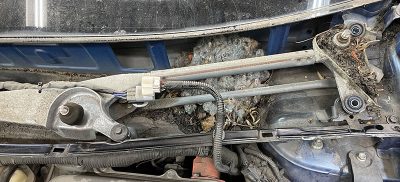
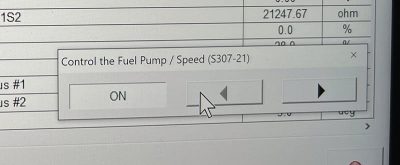

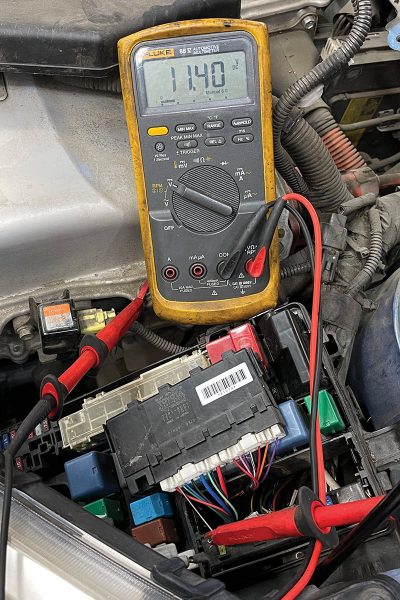
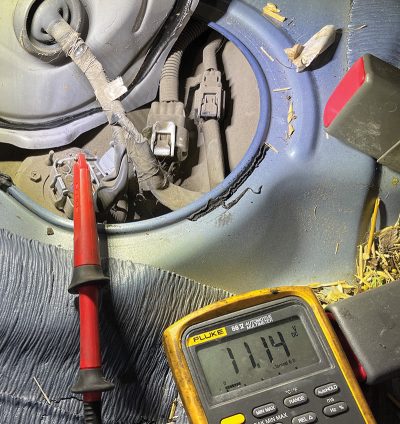
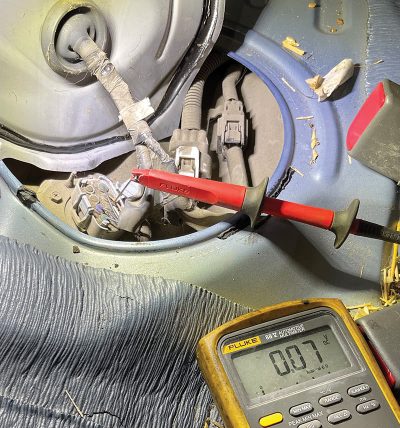
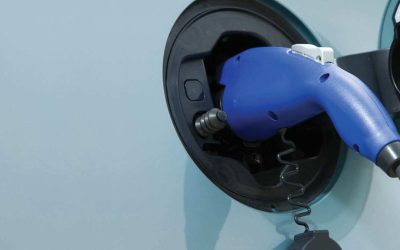
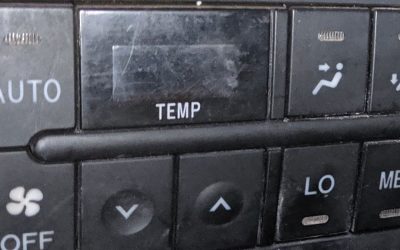
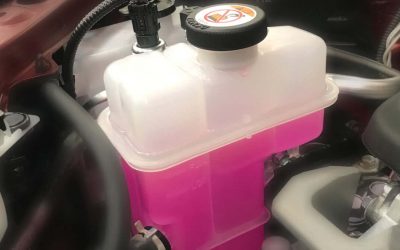
Toyota Corolla are one of the best cars ever made in the history of car manufacturer just like the VW beetle.